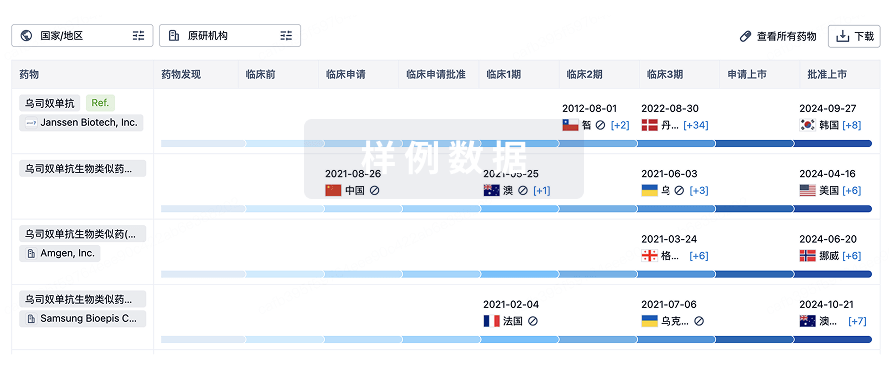预约演示
更新于:2025-05-07
SP-14
更新于:2025-05-07
概要
基本信息
在研机构- |
非在研机构 |
权益机构- |
最高研发阶段终止药物发现 |
首次获批日期- |
最高研发阶段(中国)- |
特殊审评- |
关联
100 项与 SP-14 相关的临床结果
登录后查看更多信息
100 项与 SP-14 相关的转化医学
登录后查看更多信息
100 项与 SP-14 相关的专利(医药)
登录后查看更多信息
9
项与 SP-14 相关的文献(医药)2025-04-01·Acta Tropica
Designing a Multi-Epitope Vaccine Candidate for Visceral Leishmaniasis Targeting Leishmania and Sand Fly Vector Antigens: An In Silico Approach
Article
作者: Kumar, Ajay ; Dikhit, Manas Ranjan ; Sen, Abhik ; Pranav, A
2023-10-25·ACS applied materials & interfaces
High-Energy Composite Fuels with Improved Combustion Efficiency by Using AlH3 Embedded with Al Particles.
Article
作者: Xie, Wu-Xi ; Nie, Hong-Qi ; Yu, Ming-Hui ; Li, Ya-Jin ; Yan, Qi-Long ; Xu, RuiXuan
2015-06-03·Human Vaccines & Immunotherapeutics3区 · 医学
Conserved epitopes on HIV-1, FIV and SIV p24 proteins are recognized by HIV-1 infected subjects
3区 · 医学
Article
作者: Missa P Sanou ; Shannon R Roff ; Jay A Levy ; Janet K Yamamoto ; Mobeen H Rathore
100 项与 SP-14 相关的药物交易
登录后查看更多信息
研发状态
10 条进展最快的记录, 后查看更多信息
登录
| 适应症 | 最高研发状态 | 国家/地区 | 公司 | 日期 |
|---|---|---|---|---|
| 脓毒性休克 | 药物发现 | 美国 | - |
登录后查看更多信息
临床结果
临床结果
适应症
分期
评价
查看全部结果
| 研究 | 分期 | 人群特征 | 评价人数 | 分组 | 结果 | 评价 | 发布日期 |
|---|
No Data | |||||||
登录后查看更多信息
转化医学
使用我们的转化医学数据加速您的研究。
登录
或

药物交易
使用我们的药物交易数据加速您的研究。
登录
或

核心专利
使用我们的核心专利数据促进您的研究。
登录
或

临床分析
紧跟全球注册中心的最新临床试验。
登录
或

批准
利用最新的监管批准信息加速您的研究。
登录
或

生物类似药
生物类似药在不同国家/地区的竞争态势。请注意临床1/2期并入临床2期,临床2/3期并入临床3期
登录
或

特殊审评
只需点击几下即可了解关键药物信息。
登录
或

Eureka LS:
全新生物医药AI Agent 覆盖科研全链路,让突破性发现快人一步
立即开始免费试用!
智慧芽新药情报库是智慧芽专为生命科学人士构建的基于AI的创新药情报平台,助您全方位提升您的研发与决策效率。
立即开始数据试用!
智慧芽新药库数据也通过智慧芽数据服务平台,以API或者数据包形式对外开放,助您更加充分利用智慧芽新药情报信息。
生物序列数据库
生物药研发创新
免费使用
化学结构数据库
小分子化药研发创新
免费使用
